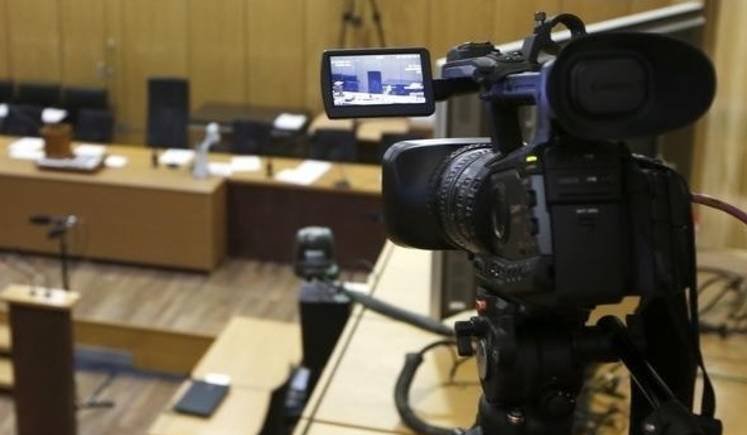Do you solemnly swear to smile for the camera?
/PHOTO CREDIT: THE FUND FOR MODERN COURTS (NEW YORK)
Very misleading subtitle on MSNBC a few days ago: “World watches Trump hush money trial.”
No, the world isn’t. Because TV news cameras aren’t allowed in the courtroom. And they should be.
Whatever you think of the merits of the Manhattan case against Donald Trump, this is a historic trial – the first criminal trial of a former U.S. president. And while the public relies on reporters’ accounts and a few still photos, Trump uses televised statements in the hallway to distort the courtroom events taking place. I’d also like to witness his reported napping, since age and energy have become a 2024 campaign issue.
The extraordinary circumstances of this case aside, there are good reasons to allow TV cameras in most courtrooms.
Currently, federal courts do not allow them. Except in the few states where cameras are prohibited by law – and New York is one of them -- state courts usually leave the decision to local presiding judges or individual trial judges. Restrictions are intended to limit distractions, protect the comfort of participants, and prevent showboating by lawyers and witnesses. For decades, proponents’ best evidence has been the O.J. Simpson trial. But more significantly, many criminal defense attorneys believe cameras work against the fair trial rights of their clients.
That’s all reasonable, but the public benefits of courtroom cameras outweigh the concerns, especially since the concerns aren’t inevitable and could be mitigated if necessary.
Open courts are a foundational principle, and to extend that principle only to the limited number of seats in a room seems artificial. Broader exposure would help to educate the public about the process and presumably increase trust in it.
And if the process isn’t working as it should in particular cases, transparency provides the chance for accountability, a chance to call out and fix the failures and injustices. I suspect that’s why some judges and lawyers oppose cameras. It’s an additional, probably uncomfortable, level of public scrutiny. But with the high stakes of any trial, judges and lawyers should understand the necessity.
It can work. Put a stationary camera facing the judge and witnesses and another one facing the attorneys and defendant. A single feed for all media. Cameras seemed not to cause any big problems during the high-profile trials of Minneapolis police officer Derek Chauvin in 2021 and South Carolina attorney Alex Murdaugh in 2023, for examples. (The former occurred during the pandemic. For a different opinion on the latter and on courtroom cameras in general, read this.)
If the camera skeptics continue to prevail, live audio, as the U.S. Supreme Court does, would be better than nothing. But nothing may be all the public gets from three of the four pending Trump criminal cases, with the Georgia election interference case as the exception.
The news media want more, for the news value and for the ratings. To defend against claims of partisanship and favored treatment, the U.S. judicial system should want more, too.

